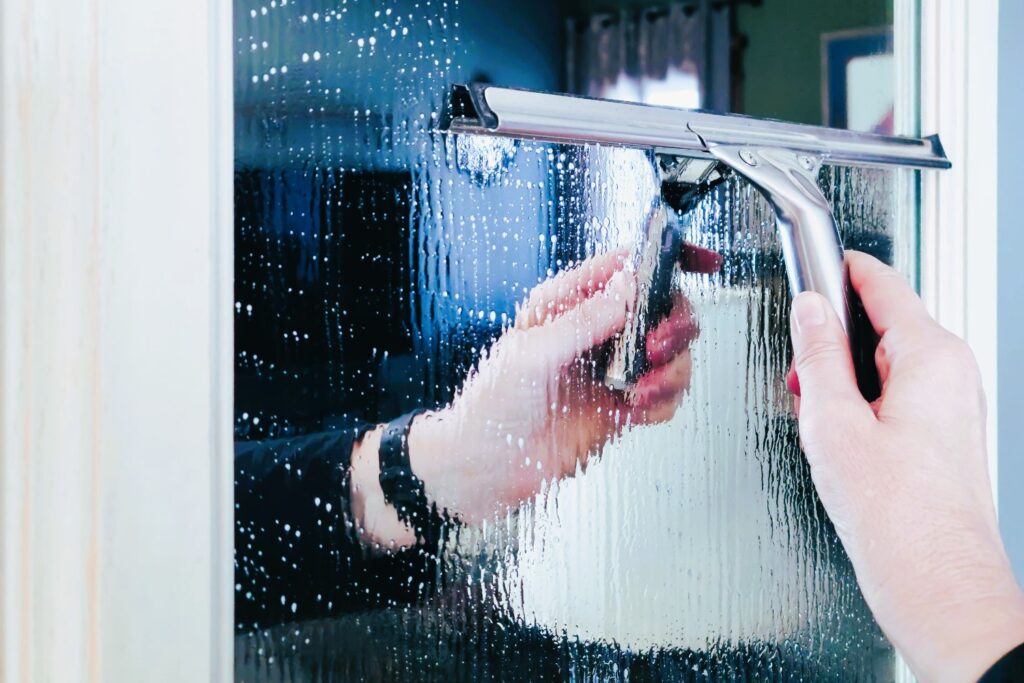Cleaning windows can be a satisfying task that enhances the appearance of your home or office. However, it’s important to prioritize safety when undertaking window cleaning projects, especially for DIY enthusiasts. Working at heights and handling cleaning equipment can pose potential risks if proper precautions are not taken. In this article, we will provide essential safety tips for DIY enthusiasts who want to clean their windows effectively while minimizing the risk of accidents or injuries. By following these guidelines, you can ensure a safe and successful window cleaning experience.
- Assess the Risks and Plan Accordingly
Before starting any window cleaning project, it’s crucial to assess the risks associated with the specific task at hand. Consider factors such as the height of the windows, the accessibility of the area, and the condition of the windows themselves. Identify any potential hazards, such as uneven surfaces, fragile frames, or nearby power lines. Based on the assessment, develop a clear plan that outlines the necessary safety measures, tools, and equipment required to complete the task safely.
- Use Appropriate Equipment and Tools
Using the right equipment and tools is essential for both efficiency and safety during window cleaning. Invest in a sturdy and reliable ladder or scaffolding system that is appropriate for the height of the windows you will be working on. Ensure that the ladder or scaffolding is set up on a stable surface and that it is secure and level. Use non-slip shoes or boots to maintain proper footing and prevent slips or falls. Additionally, choose window cleaning tools such as squeegees, microfiber cloths, and extension poles that are specifically designed for the task and provide optimal reach and control. Like the article? Read also about Window Cleaning Methods.
- Dress for Safety
Wearing appropriate clothing and protective gear is a fundamental aspect of window cleaning safety. Dress in comfortable, non-restrictive clothing that allows for ease of movement. Avoid loose-fitting garments that can get caught on equipment or obstruct your vision. Consider wearing long sleeves and pants to protect your skin from potential scratches or exposure to cleaning agents. Furthermore, use safety goggles or glasses to shield your eyes from splashes or debris, and consider wearing gloves to protect your hands and improve your grip on tools and equipment.
- Choose Safe Cleaning Solutions
When selecting cleaning solutions for your windows, opt for products that are safe, non-toxic, and environmentally friendly. Avoid using harsh chemicals that can be harmful to your health or cause damage to the window surfaces. Look for window cleaning solutions that are specifically formulated for streak-free results and are safe to use on various types of glass. Additionally, read and follow the manufacturer’s instructions carefully to ensure proper usage and dilution ratios.
- Be Mindful of Weather Conditions

Weather conditions can significantly impact the safety of window cleaning. Avoid cleaning windows during extreme weather conditions such as high winds, heavy rain, or freezing temperatures. Slippery surfaces or gusts of wind can increase the risk of accidents and make it difficult to maintain control of equipment and tools. Choose a day with mild weather and plan your cleaning activities accordingly. If weather conditions deteriorate while you are working, stop immediately and resume when conditions improve.
- Work with a Partner or Inform Someone
If possible, consider working with a partner when tackling window cleaning projects. Having a second person can provide additional assistance, support, and an extra pair of eyes to ensure safety. If working alone, inform a family member, friend, or neighbor about your window cleaning plans. Provide them with an estimated timeframe for the task and let them know how to reach you in case of an emergency. It’s important to have someone aware of your activities in case assistance is needed.
Conclusion
Window cleaning can be a rewarding and satisfying task for DIY enthusiasts, but it’s crucial to prioritize safety throughout the process. By assessing the risks, using appropriate equipment, dressing for safety, choosing safe cleaning solutions, being mindful of weather conditions, and working with a partner or informing someone, you can minimize the potential hazards associated with window cleaning. Remember, safety should always be the top priority when undertaking any DIY project. Enjoy the process of making your windows shine, but do so with caution and care.
For more information on window cleaning safety and guidelines, you can visit the following websites:
- Wikipedia – Window cleaning
These resources provide valuable insights and comprehensive information on window cleaning safety practices.


